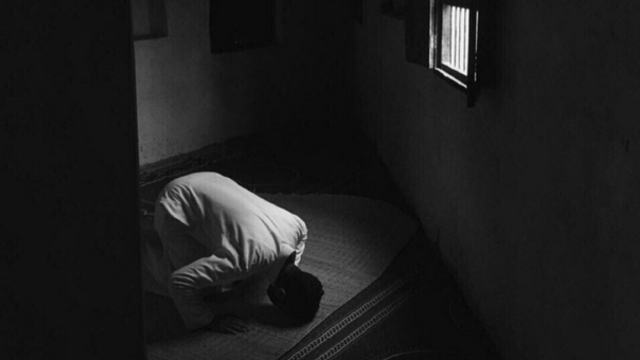What is testing?
Situation testing or discrimination testing, also called testing, is an investigative method aimed at detecting discrimination that dates back to 1939 in France.
It consists of comparing the results obtained by two types of candidates who are identical in every way except for one criterion that we want to test (for example, origin, place of residence, etc.). The test is carried out in real selection processes such as hiring or access to goods.
Situation tests conducted in France by academics have shown that, with equal skills, a woman with a foreign-sounding name and wearing a headscarf was 56 times less likely to be contacted for a job interview than a woman perceived as being of native origin and not displaying any religious sign (“Discrimination in hiring related to wearing a veil: results of a CV testing conducted in France”, Conference The Making of Discrimination, Nov. 6. 2014).
Thus, in the professional environment, to verify the existence of discrimination based on origin, identical applications are sent, modifying only the first and last names, using different consonances suggesting a different origin. If the results are more favorable for one type of candidate than for another, then it can be estimated that there is a presumption of discrimination.
This method of detecting discrimination allows for pre-establishing proof of discrimination experienced by the victim. It is therefore a probative method provided for and defined by Article 225-3-1 of the Penal Code, which states that:
“The offenses provided for in this section are constituted even if they are committed against one or more persons who have requested one of the goods, acts, services or contracts mentioned in Article 225-2 for the purpose of demonstrating the existence of discriminatory behavior, provided that the proof of this behavior is established“.
The Court of Cassation ruled for the first time on the validity of testing in a 2015 decision (Cass. Crim. February 4, 2015, No. 14-90048) where it states: ” And whereas it does not present a serious character since, while facilitating the observation of discriminatory behaviors, Article 225-3-1 of the Penal Code does not provide for any derogation from the rules of prosecution and judgment of offenses; moreover, it does not confer on the Public Prosecutor the power to provoke the commission of an offense and does not call into question the judge’s power to assess the probative value of the incriminating elements produced by the parties, after having submitted them to adversarial discussion; that it thus does not infringe on the rights of the defense or the right to a fair trial; “
How to conduct testing?
The different methods:
You can perform a discrimination test if you think you have been discriminated against (examples: refusal of a job interview or refusal to visit a rental property) and you want to confirm this.
You must establish a reference profile, that is, a profile that is comparable to yours: only the characteristic likely to constitute a criterion of discrimination (origin, age, etc.) is distinguished, the rest of the information must be almost identical.
Then, depending on the situations, different methods can be used:
- The physical test: this method can be used for access to certain goods or services (shops, taxis for example) or access to leisure facilities (restaurants, gyms for example). It involves you presenting yourself in person, then in case of refusal, asking a person with a different criterion from the one that would pose a problem (e.g., a disability, a religious sign) to present themselves a few moments later.
- The test by email or mail: in the case of an application for a job offer, you must first submit your CV and a few hours later or the next day, that of the reference profile you have created. The latter must be comparable, differing by the criterion you wish to test (origin, surname or nationality, place of residence). If only the reference profile is called back or invited to a job interview, the test will suggest a presumption of discrimination.
- The phone test: this can be used for reservations or appointments. Example: you contact a real estate agency to rent an apartment but you suspect discriminatory refusal, you ask someone with a different (but comparable) profile to contact the agency.
- The test via online form or application: it is possible to perform this type of test for an online purchase or the use of a job offer website, for example.
Recommendations
For the evidence of the discrimination test to be admissible by a judge, certain methodological conditions must be respected and the Constitutional Council has emphasized that the “factual elements suggesting the existence of discrimination must be ‘precise and consistent'” (Decision n°2001-455 DC, January 12, 2002).
Before conducting the test, you must first have been a victim of discrimination in order to then be able to file a complaint or take legal action, or if it is an association, it must have received a report.
The Defender of Rights also issues a series of recommendations:
- Keep the evidence of the initial discrimination, any documents you may have had to provide, and, if applicable, the response you received;
- Ensure that the good or service that was refused to you is still available: the establishment must still be open, the advertisement still online;
- Provide one or more witnesses so they can attest to the conduct of the test and the exchanges. The person(s) who constituted the reference profile can be among the witnesses;
- Conduct the test in 2 steps, starting by presenting your profile or that of the victim, then the reference profile (profile without the characteristic exposing to discrimination) within a short time to avoid any change in circumstances that could explain the difference in treatment;
- Do not influence the interlocutor with biased remarks, attitudes, or comments. Remain neutral and avoid any provocation to discrimination;
- Keep all elements to ensure the follow-up of the test and the identification of the accused: photos of physical testers, screenshots of tested advertisements, recordings of phone conversations, text messages, CVs, cover letters, email exchange histories, names of interlocutors, test location, etc. For phone tests, it is advisable to use the speakerphone so that the witness can follow the conversation and testify. For online tests, each step must be meticulously documented with screenshots.
- Have witnesses provide written statements.
Some larger-scale testing has taken place at the request of the Defender of Rights.
Testing as a Method of Proof
In the context of legal action, the results of the test can contribute to establishing proof of discrimination. Discrimination testing is a method of proving discrimination recognized by law in criminal, civil, and administrative matters:
In Criminal Matters
For the Criminal Chamber of the Court of Cassation, testing is an admissible method of proof before the criminal judge (June 11, 2002, n° 01-85.559; June 7, 2005 n°04-87354; February 28, 2017 n°15-87378) under conditions:
- That it does not give the public prosecutor the power to provoke the commission of an offense;
- That it does not call into question the judge’s power to assess the probative value of the elements produced by the parties, after adversarial debate.
There is also a limit set by case law: disloyalty attributable to the administrative or judicial authority. Therefore, the following are prohibited:
- Stratagems, provocations, and machinations set up by the judicial or administrative authority determining the commission of the offense (Cass. Crim. May 11, 2006 n° 05-84.837); The Court of Cassation specified that: “only prohibited is the stratagem which, by circumventing or diverting a procedural rule, has the purpose or effect of vitiating the search for evidence by infringing on one of the essential rights or one of the fundamental guarantees of the suspected or prosecuted person.” (Cass. ass. plén., Dec. 9, 2019, n° 18-86767).
- The production of documents fraudulently obtained by the administration (Cass. Crim. Oct. 28, 1991 90-83.692).
In Civil Matters
In the adversarial system, which governs civil trials, the parties must provide evidence for their claims. Article 9 of the Code of Civil Procedure states that ‘it is incumbent upon each party to prove, in accordance with the law, the facts necessary for the success of their claim.’
Testing as a method of proof is admissible in this context.
In labor law, it is admissible as one of the elements composing the body of evidence that must be gathered by the victim of discrimination in accordance with Article L. 1134-1 of the Labor Code. This article requires that when the victim (a job applicant, intern, or employee seeking training in a company) presents factual elements suggesting the existence of discrimination, ‘it is incumbent upon the defendant to prove that their decision is justified by objective elements unrelated to any discrimination.’
Also, Article 4 of Law No. 2008-496 of May 27, 2008 (as amended by Law No. 2017-86 of January 27, 2017) states that ‘ any person who believes they are a victim of direct or indirect discrimination shall present before the competent court the facts that allow its existence to be presumed. In view of these elements, it is up to the defendant to prove that the measure in question is justified by objective elements unrelated to any discrimination .
This results in an exception to the principle of the loyalty of evidence admissible before civil courts for the purpose of demonstrating discriminatory behavior through a discrimination test.
What to do after a positive discrimination test?
- You can refer the matter to the Defender of Rights who can open an investigation and has already had the opportunity to rule on the subject (Decision No. 2018-016 of February 9, 2018). Once all the elements have been addressed, they can notably ask the person in question (employer, property owner, etc.) to justify the difference in response given to different profiles. They can also conduct hearings or present observations in court.
- You can take legal action and present the results before a criminal judge or before an administrative or civil judge.
- You can call upon Equitas to assist you in your legal proceedings.
APPLICABLE REFERENCES
Article 225-3-1 of the Penal Code; Article 9 of the Code of Civil Procedure; Article L. 1134-1 of the Labor Code; Article 4 of Law No. 2008-496 of May 27, 2008 on various provisions for adaptation to Community law in the field of anti-discrimination; Decision of the Defender of Rights No. 2018-016 of February 9, 2018.
Case law: Constitutional Council decision No. 2001-455 DC, January 12, 2002; Cass. Crim. February 4, 2015, No. 14-90048; Cass. Crim. June 11, 2002, No. 01-85.559; Cass. Crim. June 7, 2005 No. 04-87354; Cass. Crim. February 28, 2017 No. 15-87378; Cass. Crim. May 11, 2006 No. 05-84.837; Cass. ass. plén., Dec. 9, 2019, No. 18-86767; Cass. Crim. Oct. 28, No. 1991 90-83.692.




